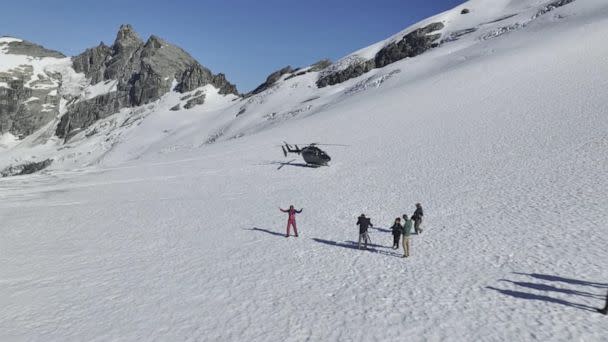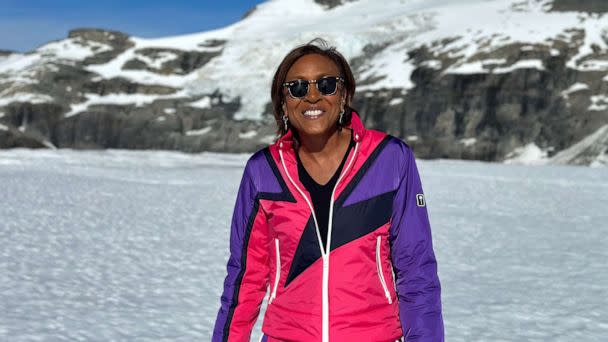Robin Roberts shares up-close look at New Zealand's glaciers
New Zealand is full of stunning, natural beauty and home to nearly 3,000 glaciers, which are huge tourist destinations. But the glaciers are quickly vanishing due to rising temperatures.
Robin Roberts visited Rotorua on an expedition of a lifetime and shared a first-hand look at the shrinking ice.
First, she suited up to hop in a helicopter for a bird's-eye view of the dangerously thin ice, which scientists call a critical part of the climate crisis.

The top of New Zealand's Southern Alps are a bustling tourism hub and an everyday office for longtime glacier pilot Michael Clarke, who led Roberts and team to the extreme terrain at the top.
"I started flying in 2004. I've seen lots of interesting things that I guess most people could only dream of. So mission accomplished," he said.
As Roberts took in the views of the majestic mountains, which she hailed as "untouched" with crystal blue lakes and breathtaking waterfalls, the trek revealed impact of a changing climate.
"It looks like a waterfall but it’s ice falling off the cliffs and smashing. So you can see it disappearing right in front of our eyes," Clarke explained.
Cracks and crevices are part of the stunning landscape where ice has been melting at a record rate.

Brian Anderson, a local scientist and assistant professor, told "Good Morning America" that of the nearly 3,000 glaciers, "most of them [are] very small ... but we've been losing really rapidly. In fact, it's accelerating."
The rapid retreat has created a long-term threat to locals who deeply rely on glacier tourism.
Cliff Goodwin has dedicated his life to guiding glacier tours until 10 years ago a grim reality set in when the popular Franz Josef glacier was deemed unsafe to access by foot.
"You couldn't walk on the glacier anymore. We had to start flying on a helicopter," he explained. "It is a bit sad for us -- we see a lot of the glaciers disappearing."
In a pivot with his plans, he and his wife Tash started Glacier Valley Eco Tours where they take visitors on nature expeditions near the foot of the ice.
"The fact that they have receded so much in such a short amount of time is not natural," American tourist Jenna Mercurio told "GMA." "Even if it's not right in your backyard it's still gonna affect you."
Anderson studies the rivers of ice in real time by installing cameras on the glacier to monitor the drastic changes.
"All of the work that I've done over the last 20 years has shown that ... the future depends very much on the temperature," he said.
To experience the glacier's conditions first-hand, Roberts and crew traveled over 6,000 feet above sea level to land on top of the ice at Clarke Glacier.
Upon exiting the helicopter, Clarke noticed the texture of the ice they were standing on was quite soft and pointed out that it was considerably warm for 10 a.m.
"Why is it important to you that people know what's going on here?" Roberts asked.
"They are disappearing quickly," he said, pointing out that "a few years ago, the glacier finished there. And it's just been sort of gradually retreating."
Clarke continued, "I bring tourists from all around the world to appreciate and look at these beautiful glaciers. ... But once they're gone, obviously we won't be able to do that anymore."
The glacier that visitors could previously walk to is now only visible by chopper.
"It's all receded so far up the mountain, it's basically surrounded by cliffs. And you've got to be a pretty intrepid mountaineer to hike up here," he explained.
The one-of-a-kind visit wrapped up with bright sun, soft ice and extraordinary views as Roberts took a flight back aboard the helicopter.
"New Zealand researchers predict that in a decade, many of the country’s important glaciers will be gone," Roberts said. "That will impact the landscape, the water supply, and the people who rely on the glaciers to make a living."
Roberts later experienced some traditions of the Maori people at the Te Puia Cultural Center and explored Queenstown -- considered a playground for adrenaline junkies and adventure-seekers.
Robin Roberts shares up-close look at New Zealand's glaciers originally appeared on goodmorningamerica.com
